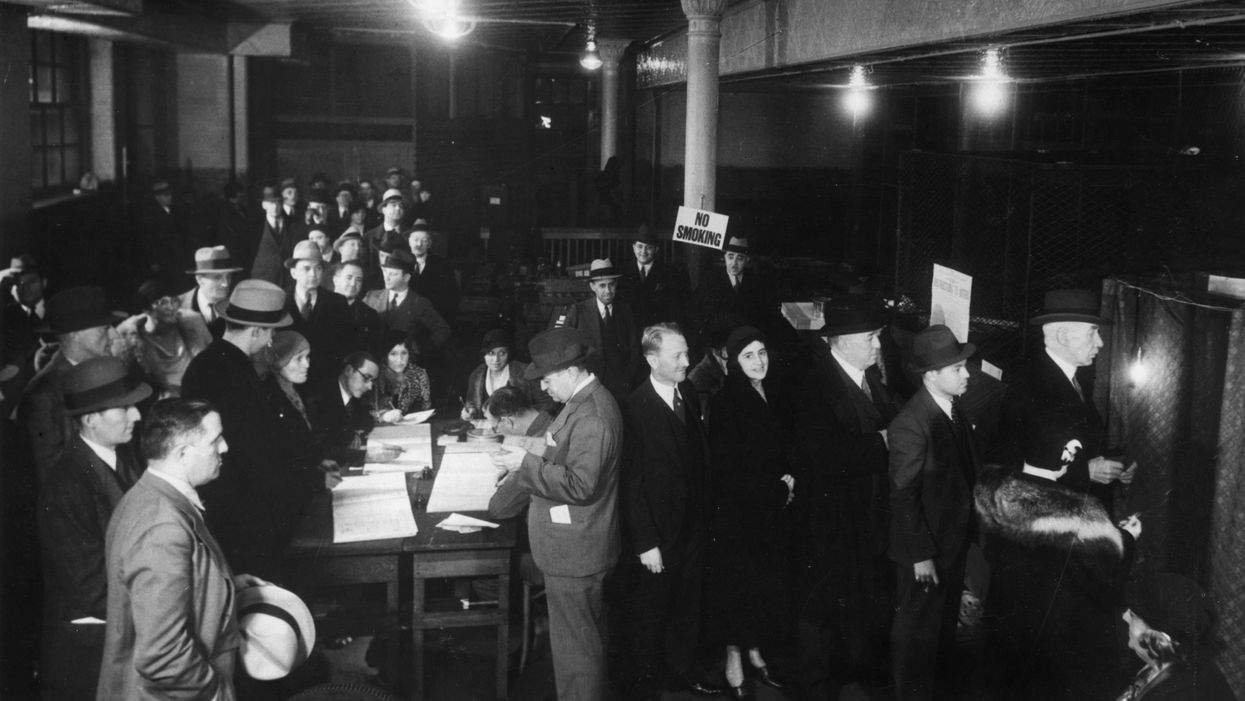Ochoa is communications director of More Equitable Democracy, which advocates for an array of democracy reforms. Cheung is the group's head.
In November, New York City voters overwhelmingly approved ranked-choice voting for future municipal elections. Advocates for electoral systems reform heralded the victory as a watershed moment in the modern pro-democracy movement. However, this interpretation misses a key point: This is actually the second time the Big Apple has turned to ranked-choice voting.
Looking back at the past can bring a new understanding for the future of RCV in NYC. How it gets implemented will be critical to understanding how this reform can truly lift up the voices of communities of color.
The city first adopted RCV in 1936, when the United States was recovering from the throes of the Great Depression and citizens worldwide were facing the rise of totalitarianism. Times were uncertain and reformers looked for representation as a way to ensure the interests of local citizens were met. Their biggest barrier was the "first-past-the-post" electoral system.
Before 1936, and for some time after 1945, the city's use of a first-past-the-post system enabled the Tammany Hall Democrats' domination of elections. Tammany Hall was the dominant political machine of its day. It controlled New York's political system, in the city and the state, often winning 95 percent of the City Council seats with only two-thirds of the vote because of the first-past-the-post system — each voter makes a single choice and the candidate with the most votes wins.
New Yorkers had enough, and decided to use a version of RCV known to political scientists as PR-STV, for proportional representation with the single transferable vote, to change the rules and the outcome of political games. Eight decades ago, there were 23 cities across America that had adopted the system.
New York City assigned a number of city councilors for each borough based on total population. And each political party was assigned a number of seats in proportion to city-wide vote totals.
Voters ranked candidates in order of preference on their ballot. Each candidate who surpassed the "threshold of exclusion" or minimum number of votes to win a seat, based on first place votes would be elected. In a borough with five seats, the threshold is 16.7 percent. This is somewhat similar to how the Iowa caucuses determine candidate viability.
Under the rules single-transferable vote, last place candidates are eliminated one by one until the designated number of winners for seats in that borough have been achieved.
Before, the council had been described as a collection of self-serving, career politicians more interested in themselves and their friends than in the lives of New Yorkers. The individuals elected under PR-STV, on the other hand, advocated for enhanced social welfare policies.
The system's adoption instantly helped increase representation for the city's minorities and women. In 1941, Adam Clayton Powell Jr. was elected as the city's first African-American councilmember. (Later he became the city's first African-American representative in Congress.) Similarly, Cincinnati, Hamilton and Toledo also elected their first African-American city council members under a similar system. And this was at a time when Jim Crow's ugly face ruled much of the country, two decades before the civil rights movement flourished.
PR-STV also allowed Genevieve Beavers Earle to become the first woman elected to the New York City Council.
The reform also resulted in the election of candidates from third parties including the American Labor Party and the Communist Party. While they didn't elect enough members to control the council, they were able to influence decisions.
One thing this voting system didn't produce was an increase in voter participation. Some proponents incorrectly hypothesized it would increase the number of voters. However, an analysis of the returns doesn't seem to show a significant increase. Additionally, the data suggests the driving force in turnout was often the popularity, and urgency, of local issues.
Despite increasing representation, New York repealed PR-STV in 1945. Why? Because it worked too well.
Racism and xenophobia were major forces that led to the repeal. The system increased the number of minorities, women and third parties in political office, disrupting the status quo and causing political backlash. Similarly growing anti-immigrant sentiment against Hungarian and Greek candidates winning seats led to repeals in Massachusetts.
Most such repeals, including by New York City, happened on the cusp of the "red scare" and the civil rights movement. Opponents parroted racist talking points about the dangers of increasing African-American representation on legislative bodies and executive offices. Opponents also talked about "communist infiltration" in American democratic systems and scared voters into repealing this form of RCV.
Additionally, the Republican and Democratic parties joined forces in New York in opposition. The GOP did so in part because the American Labor Party garnered five spots on the City Council, which was two more seats than the Republican Party.
While the Democratic machine still held onto a significant portion of the seats, their overall political influence waned because of an increase in third parties and an increase in the number of independent Democrats on the council.
Author Peter Emerson wrote the quality of American democracy must be measured by diversity in representation, as well as by diversity in voting rights. The first-past-the-post system erodes the quality of both.
The status quo is especially bad for communities of color. Segregation of the population is alive and well in the parts of urban America with "majority minority" districts. For people of color to be adequately represented under a first-past-the-post system, in other words, they have to live in segregated neighborhoods.
Additionally, this also means that in jurisdictions without such severe racial segregation, there's often no path for communities of color to fight for voting rights at all.
Between the height of the Depression and the end of World War II, New Yorkers reshaped democracy in the nation's largest city in a time of massive political, social and economic turmoil. They tried to embrace the future of American democracy by enhancing representation of a diverse city in body and mind. Enhancing representation was mostly a novel idea at that time and it's one that's showing up again in the Big Apple and elsewhere.
Put simply, New Yorkers are going back to the future in 2020 with their move to modern-day ranked-choice voting.


















